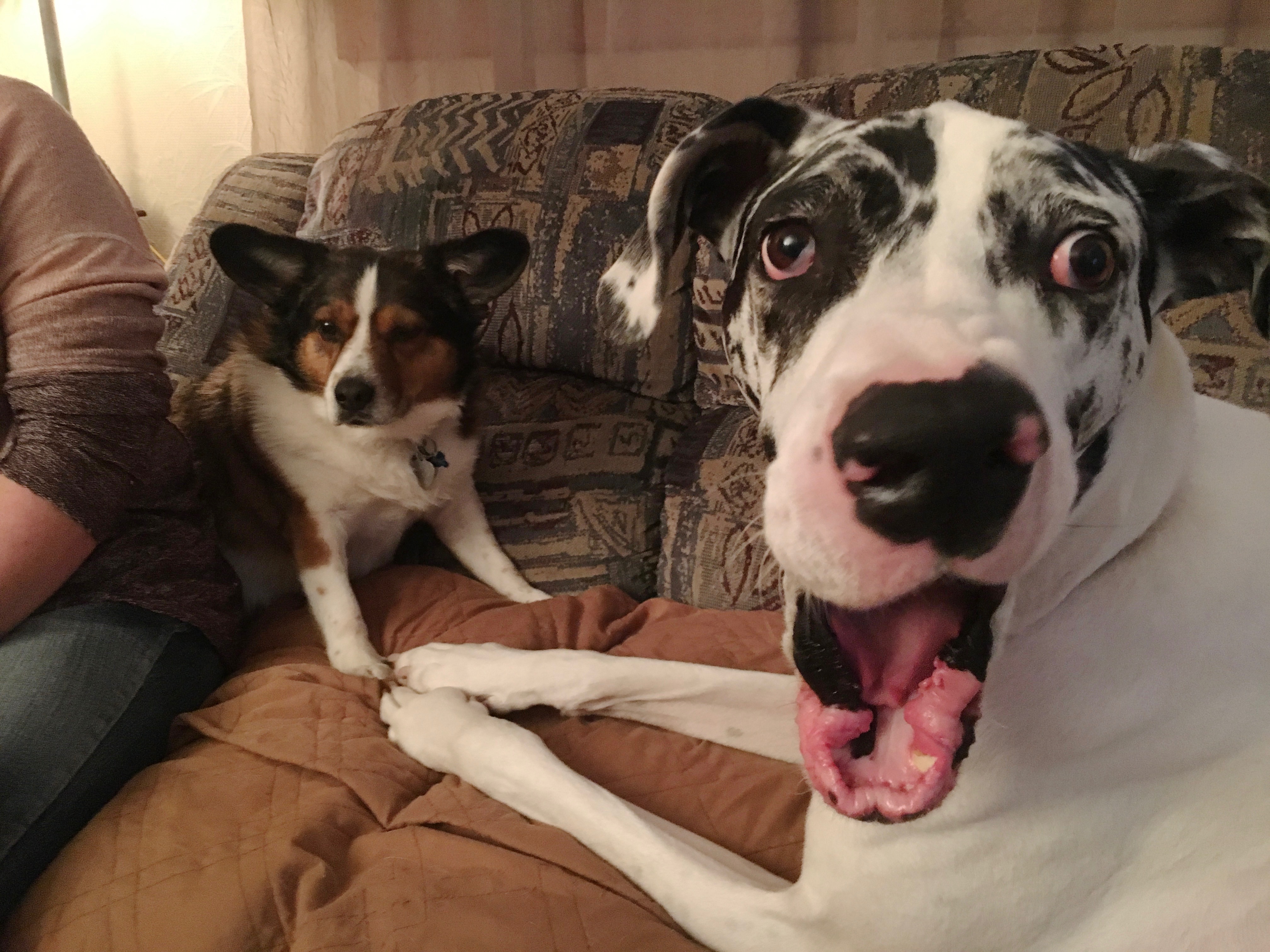Teaching a Pair of Dogs to Focus to Help Them Listen to their Guardians
By: David Codr
Published Date: March 23, 2018
For this Nebraska dog training session, we worked with 5-year-old Corgi Chopper and 6 year-old Great Dane Farley who get over excited, bark a lot in the yard and have difficulty focusing.
My initial evaluation of the dogs was that they both were somewhat insecure. Farley had previously mouthed a neighbor’s hand which was a concern for the guardian, but throughout the session, I found him to be playful, fun and easy to work with. Chopper had a more aggressive attitude at times, but is not what I would call an aggressive dog by any means. If anything, he was territorially reactive.
I started out by probing to determine the exercise, structure, discipline and leader follower dynamic in the home. I found out the dogs were under exercised, had few rules and were able to demand attention and get it. This combination of factors had resulted in the dogs seeing themselves as being in a leadership position; causing them to feel either equal or superior to the human they lived with.
To help with the dog behavior problems, any good dog behaviorist knows that you have to address the foundation first. I spent nearly an hour going over the importance or rewarding desired behaviors, how to communicate more effectively as well as how to set and enforce rules without force.
Its going to be up to the dog’s guardian to start acting like a leader through her actions with the dogs. In addition to the changes listed above, teaching the dogs new tricks and commands can help improve their confidence and respect for the human as an authority figure.
To help the human redirect their attention and keep them from acting out or getting into trouble in the first place, I showed the guardian how to teach a dog to focus on command.
Training a dog to focus is an extremely helpful command as it can be used in all kinds of situations. The key is to first fully develop the focus exercise (up to 20 seconds without distractions, then up to 20 seconds amidst them), and then use it BEFORE the dog starts to react. We call this “sub threshold” and any time a dog goes above threshold, no technique is going to help aside from increasing the distance between the dog and whatever it is reacting to.
While both dogs had issues, the both responded really well to the positive dog training techniques we covered in this in home dog training session. If the guardian can consistently act like a leader in the dog’s eyes through petting with a purpose, passive training, enforcing rules with escalating consequences, teaching the dogs to focus and training them the basic commands (especially stay), their improved behavior should continue and get even better.
Categorized in: Dog Behavior


